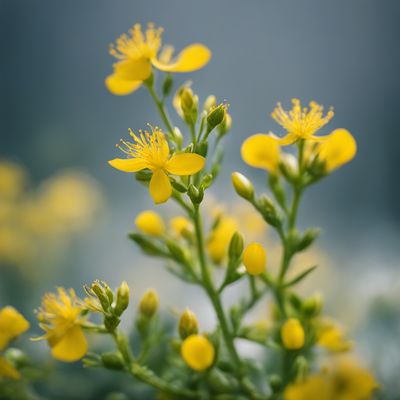
Ingredient
Ribwort plantain infusion leaves
The Healing Herb: Harnessing the Power of Ribwort Plantain
Ribwort plantain infusion leaves are oblong-shaped with prominent parallel veins. They have a mild, slightly bitter taste and a tender, yet slightly chewy texture. The leaves are dark green in color and can vary in size depending on the plant's maturity.
Origins and history
Ribwort plantain, also known as Plantago lanceolata, is a perennial herb native to Europe and Asia. It has a long history of use in traditional medicine, particularly for its soothing and healing properties. The leaves were used by Native Americans to treat wounds, insect bites, and respiratory ailments. Today, ribwort plantain is cultivated worldwide and is valued for its medicinal benefits and culinary applications.
Nutritional information
Ribwort plantain infusion leaves are a good source of vitamins A, C, and K. They also contain minerals like calcium, magnesium, and potassium. Additionally, they are rich in antioxidants and have anti-inflammatory properties.
Allergens
There are no known allergens associated with ribwort plantain infusion leaves.
How to select
When selecting ribwort plantain infusion leaves, choose fresh, vibrant leaves that are free from blemishes or discoloration. Avoid leaves that appear wilted or have yellow spots. If harvesting from the wild, ensure the leaves are from a clean and pesticide-free area.
Storage recommendations
To maintain the freshness of ribwort plantain infusion leaves, store them in a sealed plastic bag or container in the refrigerator. They can last for up to a week when properly stored. Dried leaves should be kept in an airtight container in a cool, dark place to preserve their flavor and potency.
How to produce
Ribwort plantain can be easily grown in home gardens or containers. It thrives in well-drained soil and requires moderate watering. The leaves can be harvested throughout the growing season and used fresh or dried for later use.
Preparation tips
Ribwort plantain infusion leaves can be used to make herbal teas by steeping them in hot water for 5-10 minutes. They can also be added to salads, soups, or stews for a mild, herbaceous flavor. Additionally, the leaves can be used topically as a poultice or infused in oils for skin treatments.
Culinary uses
Ribwort plantain infusion leaves are commonly used in herbal teas, salads, and as a natural remedy for various ailments. They can also be incorporated into soups, stews, or used as a garnish for savory dishes.
Availability
Ribwort plantain is widely available in Europe and Asia, where it is native. It can also be found in specialty health food stores or online retailers that offer herbal products.
More ingredients from this category » Browse all

Norway spruce infusion leaves
The Forest's Elixir

Cornflower infusion leaves
"The Vibrant Elixir: Unveiling the Beauty of Cornflower Infusion Leaves"

Hearts ease infusion leaves
The Soothing Elixir of Hearts Ease

Boldo infusion leaves
The Ancient Herbal Elixir: Unveiling the Power of Boldo Infusion Leaves

Ironwort infusion leaves
The Herbal Elixir: Unveiling the Wonders of Ironwort Infusion Leaves

Raspberry (red and yellow) infusion leaves
The Fragrant Tea Leaves

St. John´s Wort infusion leaves
"Nature's Sunshine: Exploring the Healing Powers of St. John's Wort Infusion Leaves"

Birch infusion leaves
The Healing Elixir: Birch Infusion Leaves

Lemon verbena infusion leaves
The Zesty Elixir: Unveiling the Magic of Lemon Verbena Infusion Leaves

Olive infusion leaves
The Essence of Olive Infusion Leaves

Papaya infusion leaves
The Healing Power of Papaya Infusion Leaves

Aloe leaf gel (pulp)
The Healing Gel of Nature